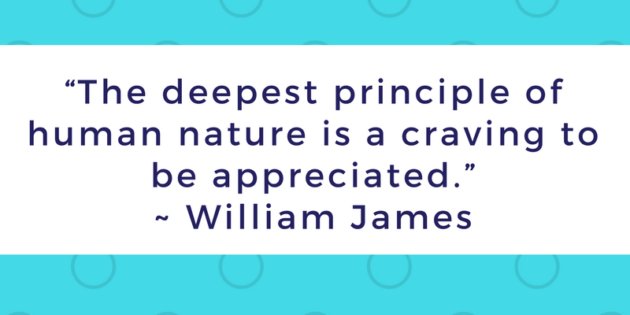Throughout my career, I have been fortunate enough to observe, work alongside of and learn from a variety of leaders in a variety of professions. Growing up as a professional athlete, I valued recognition when I performed well or won a tournament that I had trained hard for. However, I am not sure if I noticed any appreciation that came my way, as I was just doing the best I knew how with the resources I had.
As I moved from sport in to the professions of education, mental health and wellbeing, coaching and then business, I have continually been learning about, observing and exploring the traits of great leaders. Throughout this process, I have learnt there is a difference between recognition and appreciation.
Let’s start to have a look at recognition and appreciation.
What is Recognition?
Just so we can see the difference between recognition and appreciation, let’s start with some definitions. Recognition is –
- “the action or process of recognizing or being recognized, in particular” ~ Google
- “an act of recognizing or the state of being recognized.” ~ Dictionary.com
- “Identification of someone or something or person from previous encounters or knowledge.” ~ Dictionary.com
- “the fact of knowing someone or something because you have seen or heard him or her or experienced it before” ~ Cambridge Dictionary
What is Appreciation?
According to the following, appreciation is –
- “recognition and enjoyment of the good qualities of someone or something.” ~ Google
- “a feeling or expression of admiration, approval, or gratitude” ~ Merriam-Webster
- “Recognition of the quality, value, significance, or magnitude of people and things.” ~ The Free Dictionary
- “the feeling you have when you are grateful to someone” ~ MacMillan Dictionary
Stephen Covey says –
“Next to physical survival, the greatest need of a human being is psychological survival – to be understood, to be validated, to be appreciated.” (p.3993).
William James is also quoted as saying –
“The deepest principle of human nature is a craving to be appreciated.”
The Difference Between Recognition and Appreciation
In the book the 5 Languages of Appreciation in the Workplace, the authors Paul White and Gary Chapman share the following insights on the difference between recognition and appreciation –
“Recognition is largely about behaviour. ‘Catch them doing what you want and recognise it,’ the book says. Appreciation, conversely focuses on performance plus the employee’s value as a person.
Recognition is about improving the performance and focuses on what is good for the company. Appreciation emphasises what is good for the company and what is good for the person (which may sometimes mean helping them find a position that is better for them than their current role).
The relational direction of recognition is top-down coming from leadership. Appreciation on the other hand, can be communicated in any direction.” (p.23).
5 Languages of Appreciation
Each person is unique and according to Chapman and White in their book, the 5 Languages of Appreciation in the Workplace, each person has a –
“…primary and secondary language of appreciation. Our primary language communicates more deeply with us than the others. Although we will accept appreciation in all five love languages, we will not truly feel encouraged unless the message is communicated through our primary language. When messages are sent repeatedly outside of that language, the intent of the message ‘misses the mark’ and loses the impact the sender had hoped for.” (p.25).
Subsequently, each person needs to be authentically appreciated using their own primary language of appreciation, not the appreciation language of the person given the praise.
The 5 languages of appreciation (which are the same as the 5 love languages, just applied differently) are self-explanatory, but here’s a brief description of what they mean:
- Words of Affirmation: Expressing verbal compliments or words of praise and appreciation.
- Quality Time: Giving someone your undivided, focused attention.
- Receiving Gifts: Giving gifts is symbol of love and affection.
- Acts of Service: Completing tasks and/or actions to show your love (e.g. cooking, washing dishes etc.).
- Physical Touch: Feeling affection through physical touch (e.g. holding hands, sex, kissing and cuddling).
I hope this post has given you some insight in to the difference between recognition and appreciation. If you would like to discover your language of appreciation, click here.
Also, if you have any questions, please leave them below or share them on our Facebook page here.
References –
Chapman, G., & White, P. (2012). The 5 Languages of Appreciation In the Workplace: Empowering Organisations by Encouraging People. Chicago, USA: Northfield Publishing.
Covey, S. (1989). The 7 Habits of Highly Effective People: Powerful Lessons in Personal Change. New York, USA: Simon & Schuster.

















2 Comments
[…] https://www.habitsforwellbeing.com/difference-between-appreciation-and-recognition/ […]
[…] from mistakes and encourage them to continue to take risks in order to achieve results. Lastly, research shows recognition (verbal affirmation) is as powerful as physical rewards when it comes to creating […]
Leave A Response